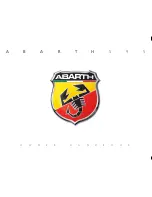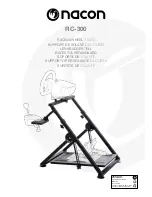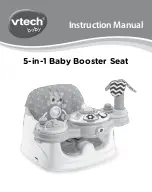
Teardrop Campers • nucamprv.com
48
Teardrop Campers • nucamprv.com
49
EQUIPMENT & HARDWARE
DINETTE/BED CONVERSION
To convert the dinette to a bed:
1. Remove the Lagun table from its bracket and stow it securely. The bracket will fasten back onto
itself, so it can be conveniently stored together.
2. Pull the tops of the two rear split back cushions forward until you hear the click of the hinge. Lay
the backs down.
3. Pull the fronts of the seats on either side together.
4. Arrange the cushions on the left and right to create the bed. You may need to adjust the rear
seat and split back cushions for even spacing.
To convert back to dinette:
1. Set cushions on right and left to upright positions.
2. Lift and push in the seats on either side.
3. Pull the seats of the rear cushions forward to allow space for the split backs.
4. Pull the split back cushions up with the attached strap until you hear the click of the hinges.
Three clicks of the hinge will put the seat in upright position. It can be adjusted as necessary.
5. Arrange cushions to your liking.
STORAGE TONGUE BOX
The storage tongue box on the front of the trailer is designed for multiple storage purposes. A few
things to note:
• Always keep the lid latched when traveling to avoid loss of contents.
• Do not force the lid back against the roof of the trailer to avoid
damaging the paint on the roof or damaging the gas prop.
• The space inside may be utilized as extra storage space. This area was designed to
accommodate the battery(s), single LP tank, customer supplied battery and gray water
disposal hose.
HARDWARE ADJUSTMENTS
During travel, everything in your camper is subject to some degree of movement and cabinets may shift
slightly. Over time this can cause misalignment of cabinetry doors. The hinges installed in your camper
can be adjusted. Other installed hardware may also be adjusted. A multi-bit screwdriver will come in
handy to make these small adjustments. If you are uncomfortable or inexperienced in making these
adjustments your dealer will be happy to assist you. Use of power tools is not recommended in making
small hardware adjustments
INTERIOR ENVIRONMENT
PROLONGED OCCUPANCY
All nuCamp campers are designed for short-term occupancy and recreational use. If the camper is used
as long-term living quarters, the warranty may be voided due to increased abnormal wear and tear
since it was not designed for long-term living purpose. Premature degradation of structure and interior
materials such as fabrics, drapes, curtains flooring, carpeting and even finished surfaces can occur. This
will be perceived as misuse, neglect or abuse according to the warranty terms and conditions. Prepare
yourself to deal with issues such as condensation and high humidity which can form mold and other
damage from moisture-related issues. To protect your new camper and avoid costly repairs, manage
moisture saturation within your camper. Practical information to do this is included in the following
sections.
AIR QUALITY
Good air quality in your camper can be maintained by:
• Having proper ventilation to carry air pollutants out of the camper and dilute emissions from
water vapor and off-gassing from interior sources.
• Avoiding harmful air pollutants such as cigarette smoke, pollen, pet dander, molds, carbon
monoxide and household cleaners.
• Vacuuming often to remove pet dander and dust.
• Not smoking inside the camper as this can damage your camper and releases formaldehyde
along with being a fire hazard.
• Not using bug sprays inside the camper.
• Keeping mold under control.
• Keeping condensation to a minimum.
There are three basic EPA recommended strategies to improve indoor air quality:
1. Control the source.
2. Improve ventilation.
3. Use air cleaners.
Read more at this link:
https://www.epa.gov/indoor-air-quality-iaq/improving-indoor-air-quality
.
Consider using an air purifier or air cleaner to promote clean air in your camper. A few points
to note:
• Tabletop air cleaner models are generally less effective than full size models.
• For an air cleaner to be most effective, good air circulation and efficient air collection is a
key element.
• Air cleaners generally are not designed to remove gaseous pollutants.
CONDENSATION
When the air temperature cools, it increases the water saturation in the air. Humidity is the amount
of water in the air expressed as a percent. Condensation begins when the air has reached 100%
humidity. Generally, condensation in a camper is from improper air flow. Most campers are compactly
constructed, giving limited air space volume into which moisture can be assimilated. The average
person can vaporize up to 1 gallon of water through normal daily activities such as cooking, bathing,
washing and even breathing. If water vapor is not controlled and kept to a minimum by ventilation or
use of a dehumidifier it will begin to collect on windows, inside walls and ceiling, and on cabinetry. This
can lead to mold or mildew development.











































